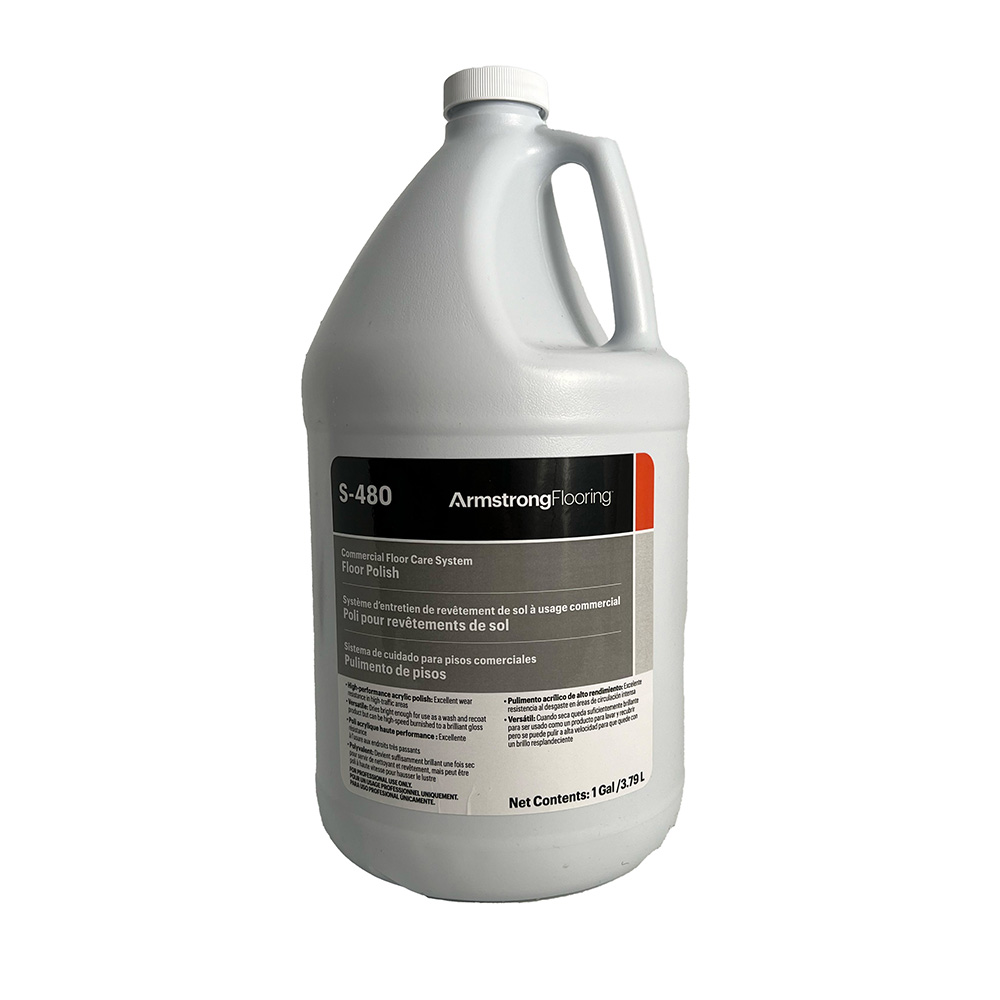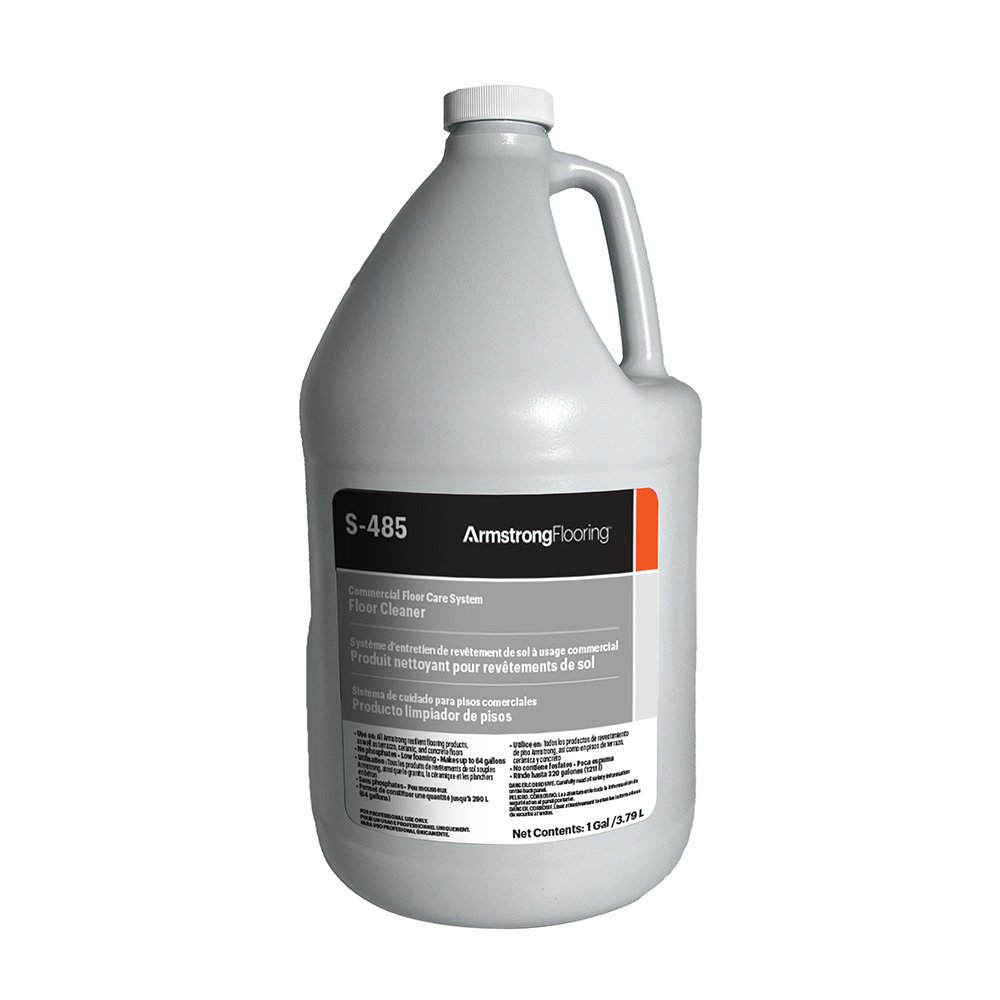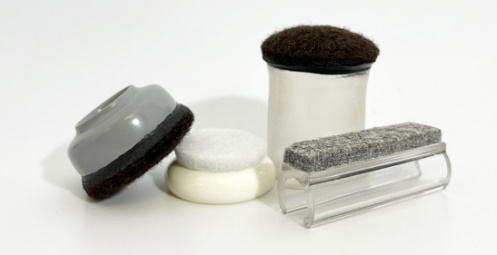
Following a regular and well-planned maintenance program will ensure a beautiful floor and increase its service life.
Helpful Tips
- Always use proper safety signage while working, especially during wet maintenance.
- Use walk-off mats at every entrance to help control grit and soil; clean walk-off mats regularly. We recommend mats without latex or rubber backing since these backingscan cause permanent discoloration.
- Protect the floor with plywood or Kraft paper during construction and while movinge quipment and furniture.
- Select proper non-staining furniture rests and casters; the contact area should be smooth, flat, and firmly on the floor at all times.
- After removing loose dirt and debris, use a damp mop and a properly diluted cleaner for daily maintenance. Do not use an excessive amount of liquid.
- When using disinfectants, always follow manufacturer’s instructions for use to avoid slippery conditions and possible discoloration.
- Protect your floor by avoiding the use of brown and black pads, or stiff-bristled, highly abrasive brushes.
Initial Maintenance
Immediately After Installation
- Newly installed flooring should not be exposed to rolling load traffic for at least 72 hours after installation to allow the adhesive to dry.
- Do not wet wash, machine scrub, or strip the floor for at least five days after installation. Excess moisture can interfere with the adhesive and/or seam treatments.
- When performing wet maintenance, always use proper signage and prohibit traffic until the floor is completely dry.
- Remove any adhesive residue with a clean, white cloth dampened with denatured alcohol.
- Sweep, dust mop or vacuum the floor to remove loose dust, dirt, and debris.
- Damp mop the floor with a properly diluted cleaner, like S-485 Commercial Floor Cleaner.
- Apply at least two coats of a high-quality commercial floor polish, like S-480 Commercial Floor Polish to temporarily protect the floor until regular maintenance procedures can begin.
Preparation for Commercial Traffic

- Scrub the floor using a rotary machine or auto scrubber (300 rpm or less) with a properly diluted cleaner
- Use a 3M® red pad, or equivalent, for a light scrub
- Use a 3M® blue pad, or equivalent, for a deep scrub
- Thoroughly scrub the floor, passing slowly in each direction
- If the floor is badly soiled and/or scratched, strip it using the procedure above but use a properly diluted stripping solution in place of the cleaner
- PLEASE NOTE: The use of aggressive strippers such as mop-on/mop-off, no-scrub and no-rinse strippers is not recommended on the tile floors less than two years old because they may affect the adhesive bond
- Rinse the floor with fresh, clean water and allow the floor to dry
- Apply 3 to 5 coats of high-quality floor polish, like S-480 Commercial Floor Polish
- In areas where the flooring will be exposed to heavy traffic and/or staining agents, we recommend applying 1 or 2 coats of a stain resistant sealer prior to the application of polish
- When using disinfectant/germicidal cleaners, always follow manufacturer’s instructions for use to avoid slippery conditions and possible discoloration. We recommend a pH neutral disinfectant
Daily & Periodic Maintenance
Sweep & Damp Mop in Areas with Light Soiling
- Sweep, dust mop or vacuum the floor to remove loose dust, dirt, and debris
- Damp mop the floor with a properly diluted cleaner, like S-485 Commercial Floor Cleaner, on a regular or daily basis
Machine Scrub for Heavy Soiling and Corrective Cleaning

- When necessary, after sweeping, dust mopping or vacuuming, scrub the floor using a rotary machine or auto scrubber (300 rpm or less) with a properly diluted cleaner
- Use a 3M® red pad, or equivalent, for a light scrub
- Use a 3M® blue pad, or equivalent, for a deep scrub
- Thoroughly scrub the floor, passing slowly in each direction
- Rinse the floor with fresh, clean water and allow the floor to dry
- If needed, additional coats of floor polish may be applied, if there is a sufficient base of polish remaining (3 to 5 coats), buff, spray buff or burnish to restore gloss
Restorative Maintenance – Stripping Existing Floor Polish
- Mix stripping solution to the appropriate dilution, depending on floor finish buildup
- Cordon off areas to be stripped and apply liberal amounts of solution uniformly on floor with mop
- Let stripping solution soak for the appropriate amount of time recommended by the stripper manufacturer
- Keep areas to be stripped wet. Rewet if necessary
- Machine scrub the floor (300 rpm or less) with a 3M blue pad or equivalent to break up the polish film, do not allow stripping solution to dry on the floor
- Remove dirty stripping solution with a wet vacuum or mop
- Rinse the floor with fresh, clean water and allow the floor to dry
- Apply 3 to 5 coats of high-quality floor polish, like S-480 Commercial Floor Polish
- When using disinfectant/germicidal cleaners, always follow manufacturer’s instructions for use to avoid slippery conditions and possible discoloration, we recommend a pH neutral disinfectant
Maintenance Equipment & Accessories
We recommend using the following accessories and equipment as part of a regular and well planned maintenance program to ensure a beautiful floor and increase its service life:
- Wet mops (microfiber, cotton, synthetic blend)
- Dry mops (microfiber, rayon, polyester, acrylic)
- Polish applicators (optional)
- Use a 3M® 5100 red pad or equivalent brush or pad for a light scrub
- Use a 3M® blue pad or equivalent brush or pad for a deep scrub
- S-480 Commercial Floor Polish
- S-485 Commercial Floor Cleaner
 Use a 3M® 5100 red pad or equivalent brush or pad for a light scrub |  Use a 3M 5300 blue pad or equivalent brush or pad for a deep scrub |
 S-480 Commercial Floor Polish S-480 Commercial Floor Polish |  S-485 Commercial Floor Cleaner S-485 Commercial Floor Cleaner |
Floor Protection
Guidelines for Floor Protection Devices
- The contact area should be smooth, slightly rounded and large enough to distribute the load evenly without damaging the floor
- Floor contact devices should be manufactured from non-staining materials
- Felt glides are recommended on smooth, hard surface. They must be kept clean and properly maintained
- Nylon glides are recommended on heavily embossed or textured surfaces
- When using rolling casters, we recommend double wheel options, to avoid damage under the casters, use a non-staining chair mat
- Furniture, appliances, and equipment should be leveled so that all flooring protection devices rest fully and firmly on the floor

Correcting Scratch Whitening
Darker-colored VCT patterns may be susceptible to scratch whitening. Follow this link for procedures to correct scratch whitening.
